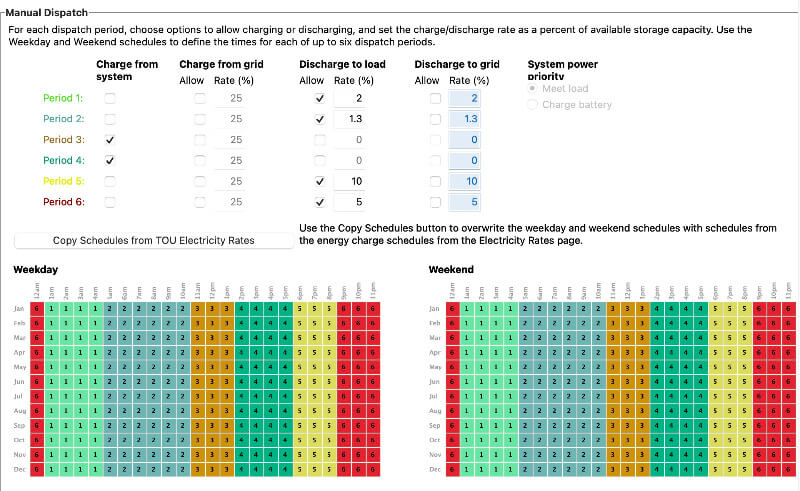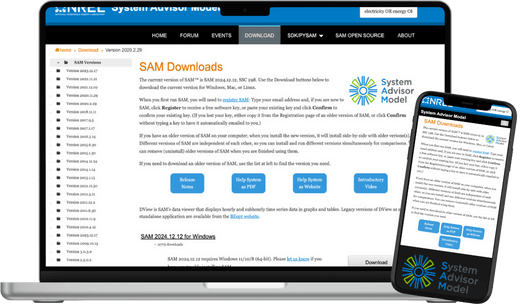
Hello!
I’m Paul Gilman, and I’m an online instructor for the Midwest Renewable Energy Association. I teach Introduction to the System Advisor Model (SAM) (PV 430), and the PV 431 course, which focuses on using SAM to model solar plus storage systems.
With a degree in electrical engineering and experience working with the National Renewable Energy Laboratory (NREL) on the SAM software development team, I bring a deep understanding of how to apply SAM to these systems.
In recent years, there has been growing interest in battery storage for both residential and commercial buildings.

Batteries offer several benefits:
- Shifting electricity usage from peak rate times to off-peak times
- Reducing demand charges for businesses
- Storing solar energy generated during the day for use at night
When installing battery storage systems, customers often have several key questions:
- What are the installation and operational costs of the batteries?
- How often will the batteries need to be replaced?
- For PV systems, is it worth including a battery with the solar setup?
These questions can be challenging to answer because of the many variables involved, including:
- The size and type of the battery
- The electricity rate structure
- The customer’s energy usage patterns
- Battery replacement frequency, which depends on the type of battery and how much it’s used
- Future battery costs
That’s Where the System Advisor Model (SAM) Comes In:
SAM integrates performance and financial modeling to evaluate the factors affecting battery storage. It calculates metrics like battery round-trip efficiency, net present value (NPV), and payback period, helping you compare and assess various design options.
NOTE: Get started with our Introduction to the System Advisor Model (SAM) PV 430 course!
Learn How to Use SAM for Solar Plus Storage Systems in PV 431
The course is divided into two sections:
SESSION 1:
Introduces basic battery storage concepts and key terms like energy arbitrage and peak shaving. It then walks you through modeling a residential PV storage system that stores solar energy during the day and discharges it at night.
SESSION 2:
Focuses on modeling a PV plus storage system for a commercial business designed to reduce monthly demand charges. It also covers options for modeling battery replacements.

Course Highlights
PV 431 dives into residential and commercial PV plus storage system modeling using SAM.
You’ll explore:
- Battery sizing and dispatch
- Battery replacements and how to model them
- How to interpret SAM results and apply them to system design
- Financial aspects, including the costs of installation, maintenance, and replacement of batteries, and how to use metrics like NPV to evaluate project feasibility
By the end of the course, you’ll have modeled both residential and commercial PV plus storage systems, gained experience with SAM’s interface, and learned how to interpret the results for your own projects.
Whether you’re helping customers understand how your proposed system will perform, designing your own system, or simply looking to learn more about solar energy and storage, you’ll be ready to use SAM in your work.
I hope you’ll consider joining PV 431. I look forward to meeting you during the course.
-Paul
Certificate of Completion
Self-Paced Learning
Continuing Education
Prerequisite Required


